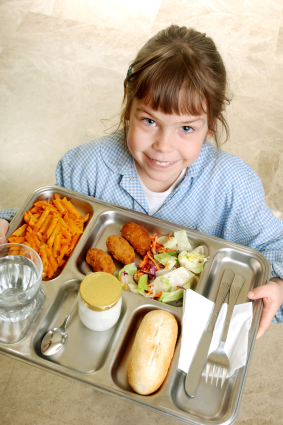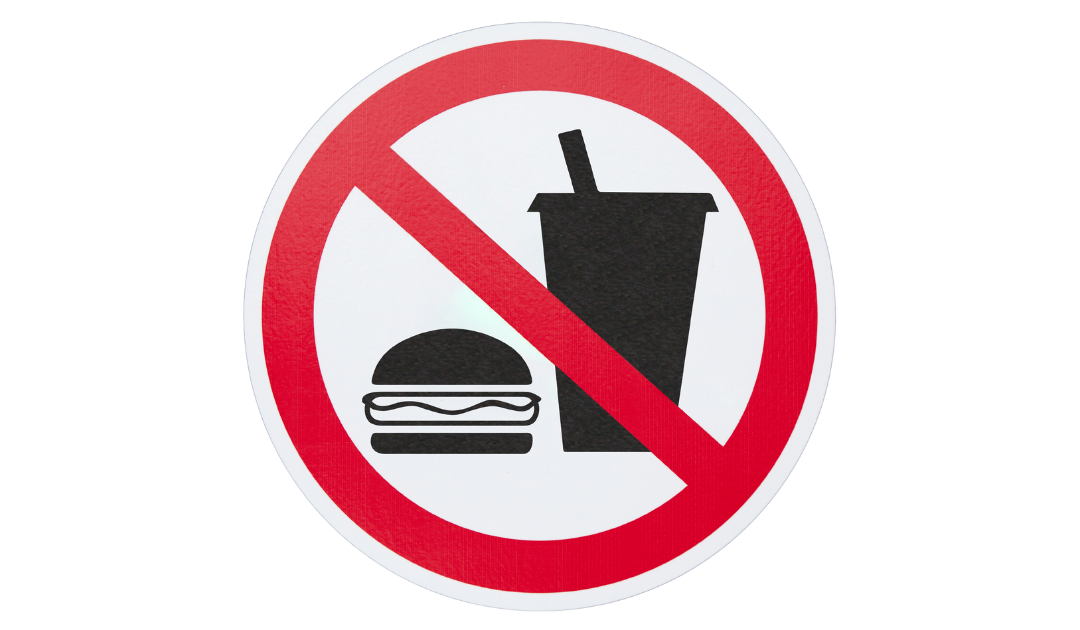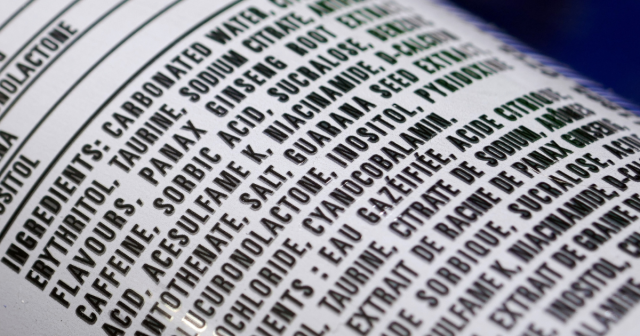What do you think you’re eating?
Have you ever returned from training feeling as though you could eat the contents of the fridge, and wolfed down a family bag of crisps while waiting for your pasta water to boil? If so, you may have wondered why, by the bottom of the bag, you still felt hungry and strangely unfulfilled. The answers lie in Dr Chris van Tulleken’s book, Ultra Processed People, which is as hard to put down as the addictive ‘foodstuffs’ he brings to our attention.
“Ultra Processed People” is a thought-provoking book that explores the detrimental effects of heavily processed foods on human health and society.
With its waterfall of revelations about ultra-processed food (UPF) this book is enlightening, nauseating and life-changing.
I’ve long been an advocate for natural foods and am suspicious of anything containing ingredients I’ve never heard of, so there’s a lot that is familiar here.
The difficulty of avoiding additives in our everyday diet is extremely disturbing and I was shocked to learn about mass food production being driven by economics rather than concerns for health.
Feeding the world, with its range of demographics, politics, cultures and climates is of course a challenge and I can understand why governments look to maximise production of affordable food. However, when the resulting foodstuff becomes less and less like the natural food it originated from and is evidently detrimental to our health, then questions need to be asked; especially when the big food conglomerates responsible for these inventions are laughing all the way to the bank.
Unless you’re drinking milk straight from a cow or plucking your fruit directly from a tree, it’s likely that the food you eat will go through some form of processing, meaning that it is altered from its natural state. Be it heating, pickling, canning, pasteurising or drying; but these processes don’t necessarily turn food into ‘junk’ or mean that it’s bad for you (1).
So what is the difference between processed and ultra-processed foods? Helpfully, foods have been classified into four groups under the NOVA system (3).
NOVA System
Group 1 : foods that are either raw or minimally processed, such as meat, fruit, and vegetables but also flour and pasta.
Group 2 : culinary ingredients that you wouldn’t eat by themselves, such as oils, lard, butter, sugar and salt, that enable you to enjoy foods from the first group.
Group 3 : food that is processed for preservation; like tins of beans, canned fish and salted nuts.
Group 4 : ‘ultra-processed food’ defined as ‘formulations of ingredients, mostly of exclusive industrial use, typically created by a series of industrial techniques and processes’.
Not very appetising? Well, examples of this group include foods that most of us regularly enjoy, such as packaged cookies, ice-cream, sauces, sweets, margarines, packaged cakes, breakfast cereals and ready-to-heat meals such as lasagne, pizza and french fries.
McDonalds french fries are classified in Group 4 in the NOVO Classification System
It is Group 4 that Dr Chris wants us to know more about. Ultra-processed food includes substances you wouldn’t ever stock at home and are designed to imitate the taste and texture of ‘real’ food, using dyes, preservatives and non-sugar sweeteners.
It is certainly convenient and its additives mean it has a long shelf life, so it can be produced and bought cheaply (3).
Misguided labelling
Unfortunately, the food choices you make are being influenced by highly skilled marketeers who know how to tempt your taste buds and those of your children – all those cartoon characters on cereal boxes!
As Dr Chang from Imperial College London (4) says, “Ultra-processed foods are everywhere and highly marketed with cheap prices and attractive packaging to promote consumption.” You should definitely shop with your hunger head switched off and reading glasses if you need them. Label reading is your key to healthy eating. Something that claims to be healthy in the large print, might prove to be partnered with a whole host of other unfamiliar substances in the small print.
Our relationship with food is complex; though fundamentally necessary to our survival as fuel and filler, it is also closely linked with the state of our emotions. Think about the types of food you reach for when a little low and in need of comfort eating and they are probably UPFs.
A recent study cites that the unnaturally high doses of refined carbohydrates in UPFs are as addictive as tobacco (5) because they trigger intense cravings. They are ultra-palatable, ultra-flavoured and extra soft to require almost no chewing – basically designed for over consumption.
Tim Spector, the author of Food for Life : The New Science of Eating Well, says. “Either ultra-processed food sends signals to the brain for the gut microbes to eat more, or it’s simply that the food is so easy to eat that it gets into the system so fast that you don’t have time to get your fullness signals in the brain.” (6).
Tim Spector, a professor of genetic epidemiology, explores the science of personalised nutrition and how our individual gut microbiomes impact our health and well-being.
Ultra-processed food presents a modern day conundrum and its prevalence now is overwhelming. Although UPFs, like sliced bread and mass-produced cakes, have been around for a few decades, the sheer number of UPF products now available to us makes them hard to avoid.
Picture the aisle in your local supermarket stuffed with every range of crisp imaginable and another where brightly coloured soft drinks are stacked high. The ubiquitous ‘meal-deal’ with crisps, fizzy drink and sandwich, is a prime example of UPF, let alone your morning bowl of cereal and the protein bar you eat on your way to the gym.
Once you become a ‘label reader’ you’ll realise that you probably already include a good many UPFs as part of your regular diet.
Sadly, ultra-processed food is not only characterised by a long list of ingredients but also by a long list of associated health issues. If eaten occasionally and in moderation these foods aren’t harmful, but the UK is said to consume more UPFs than any other country in Europe, with our children’s diets comprising 65% UPF and our shopping baskets 50%. (7)
Risks associated with UPF
It’s important to understand what the risks are of long-term and regular consumption of UPF.
Researchers from Imperial College London (4) found that UPFs are not only associated with a range of cancers, but also obesity, type 2 diabetes and cardiovascular disease. Dr Kiara Chang, from the study, said, “The average person in the UK consumes more than half of their daily energy intake from ultra-processed foods ….. Our bodies may not react in the same way to these ingredients and additives as they do to fresh and nutritious minimally processed foods.”
As part of his research Dr Chris van Tulleken (8) ate a diet made up from 80% ultra-processed food for four weeks to see what the effect would be. He experienced weight gain of around 7kg (9) along with constipation, headaches and heartburn.
Dr Chris (10) has called for government intervention because food production is inextricably linked with economics, and policies will need to be implemented to effect change in the UK.
The World Health Organisation has recommended restricting UPFs as part of a healthy sustainable diet (4) and around the world there are efforts to reduce the consumption of UPF, with Brazil, France and Canada, issuing dietary guidelines and new labelling requirements. There are currently no similar measures being put in place in the UK.
It’s a sad fact that around 75% of the calories offered in school lunches come from ultra-processed food even though Dr Varmos (11) from Imperial’s School of Public Health says, “School meals are critically important in making sure that every child has access to an affordable nutritious meal.” With school budgets squeezed by the current rise in the cost of food, this does present a real challenge.

Concerns are raised at the levels of UPF’s being given to schoolchildren
Whatever happened to simple fare I wonder ….. like a plate of meat and two veg, a meal common in wartime Britain during the 1940s.
Dieticians argue that rationing brought about the healthiest diet Britons had ever had (12) even though food was in short supply. With ‘Dig for Victory’ people were finding ways to grow their own vegetables and, as meat was scarce, they had to be inventive with cheaper cuts. Even stodgy puddings and bread and dripping were relatively healthy options; they filled the nation with calories and fortitude without the need for artificial sweeteners and additives.
How to avoid UPF’s
Which brings me to suggest how you can cut down or even avoid having UPFs as part of your regular diet. It will of course require more time and effort but here are a few ideas:
- Shop carefully for fruit and vegetables when they are in season to cut cost
- Choose whole grain pastas and rice to feel full for longer
- Aim to cook more at home, making meals from scratch
- Batch cook and freeze the results to save time
- Bake your own bread – this can be frozen
- Make your own muesli with natural ingredients
- Reduce consumption of chips, cookies, and other highly processed snacks; choose healthier alternatives like nuts, seeds, and fruits.
- Avoid products with long lists of unrecognisable or highly processed ingredients (emulsifiers, gums)
- Limit package snacks
- Shop the perimeter: In grocery stores, focus on the outer aisles where fresh produce, meats, and dairy products are usually located.
- Be wary of food products marketed as “healthy” or “natural,” as these labels can be misleading
- Replace sugary drinks with water, herbal teas, proper coffee or homemade fruit-infused water
Sample ingredients range of foods containing UPF’s
Common examples of ingredients often found in ultra-processed foods:
- Refined sugars: High fructose corn syrup, glucose syrup, sucrose, and various other sweeteners.
- Artificial sweeteners: Aspartame, saccharin, sucralose, and acesulfame potassium.
- Refined grains: White flour, white rice, and processed cereals.
- Hydrogenated oils: Trans fats and partially hydrogenated oils, often found in fried and processed foods.
- Artificial flavours: Synthetic compounds used to mimic natural flavours and natural flavourings which confuse the body’s ability to make correct associations between a nutrient and a food.
- Artificial colours: Food dyes added to enhance the appearance of the product.
- Preservatives: Chemicals added to prolong shelf life, like BHA, BHT, and sodium benzoate.
- Emulsifiers, gums and stabilisers: Substances that improve texture and prevent separation, such as lecithin and carrageenan.
- Texturised vegetable proteins: Processed soy-based products used as meat substitutes.
- High levels of sodium: Found in many processed and packaged foods as a flavour enhancer and preservative.
- Artificial additives: Various chemicals added to improve taste, appearance, or texture.
- Synthetic vitamins and minerals: Added to some fortified processed foods to compensate for lost nutrients during processing.
Don’t worry if a small part of your diet is still ultra-processed, the widespread availability of UPFs makes them hard to totally avoid and often convenience is the ruling factor. Eating them occasionally as part of a balanced healthy diet is unlikely to cause you long-term damage, but just keep mindful of the old adage – YOU ARE WHAT YOU EAT.
2. https://www.fao.org/3/ca5644en/ca5644en.pdf
3. https://www.bbcgoodfood.com/howto/guide/what-are-ultra-processed-foods
4. https://www.imperial.ac.uk/news/242892/ultra-processed-foods-linked-increased-risk-cancer/
6. https://time.com/6245237/ultra-processed-foods-diet-bad/
7. https://www.soilassociation.org/causes-campaigns/ultra-processed-foods/
9. https://www.bbc.co.uk/food/articles/van_tulleken
10. https://committees.parliament.uk/writtenevidence/117230/pdf/
11. https://www.imperial.ac.uk/news/238436/ultra-processed-foods-make-almost-two-thirds-britains/
12. https://www.theguardian.com/theobserver/2001/jan/14/life1.lifemagazine5


